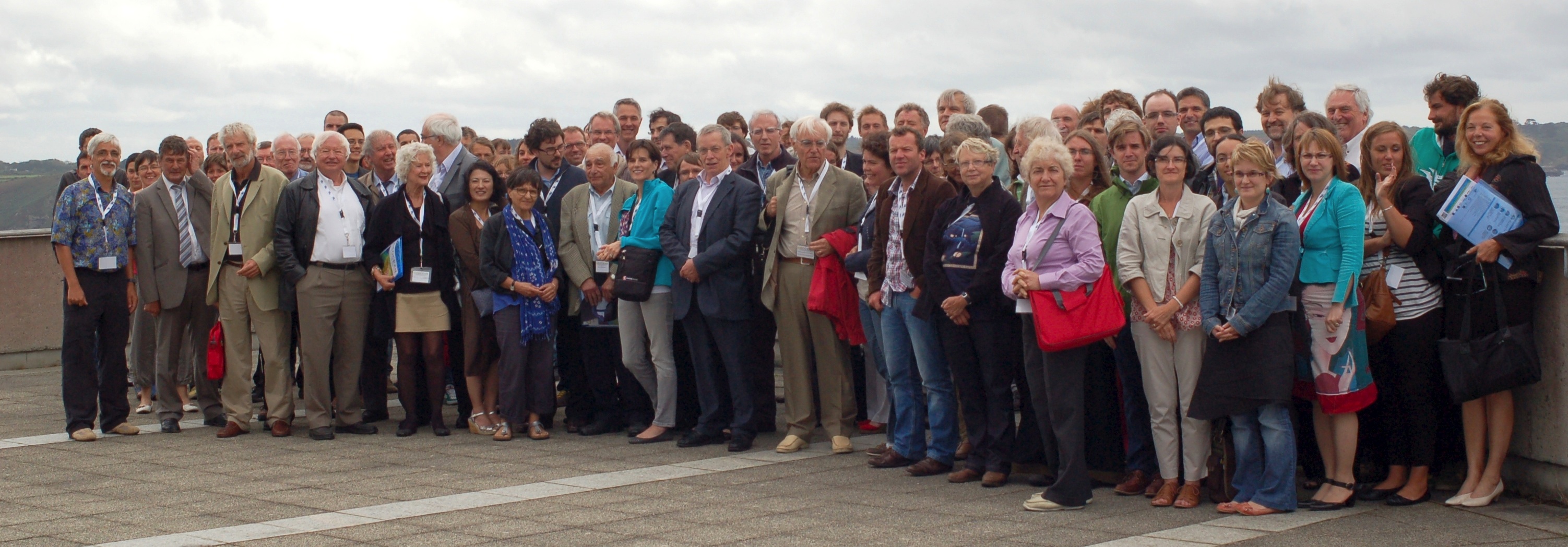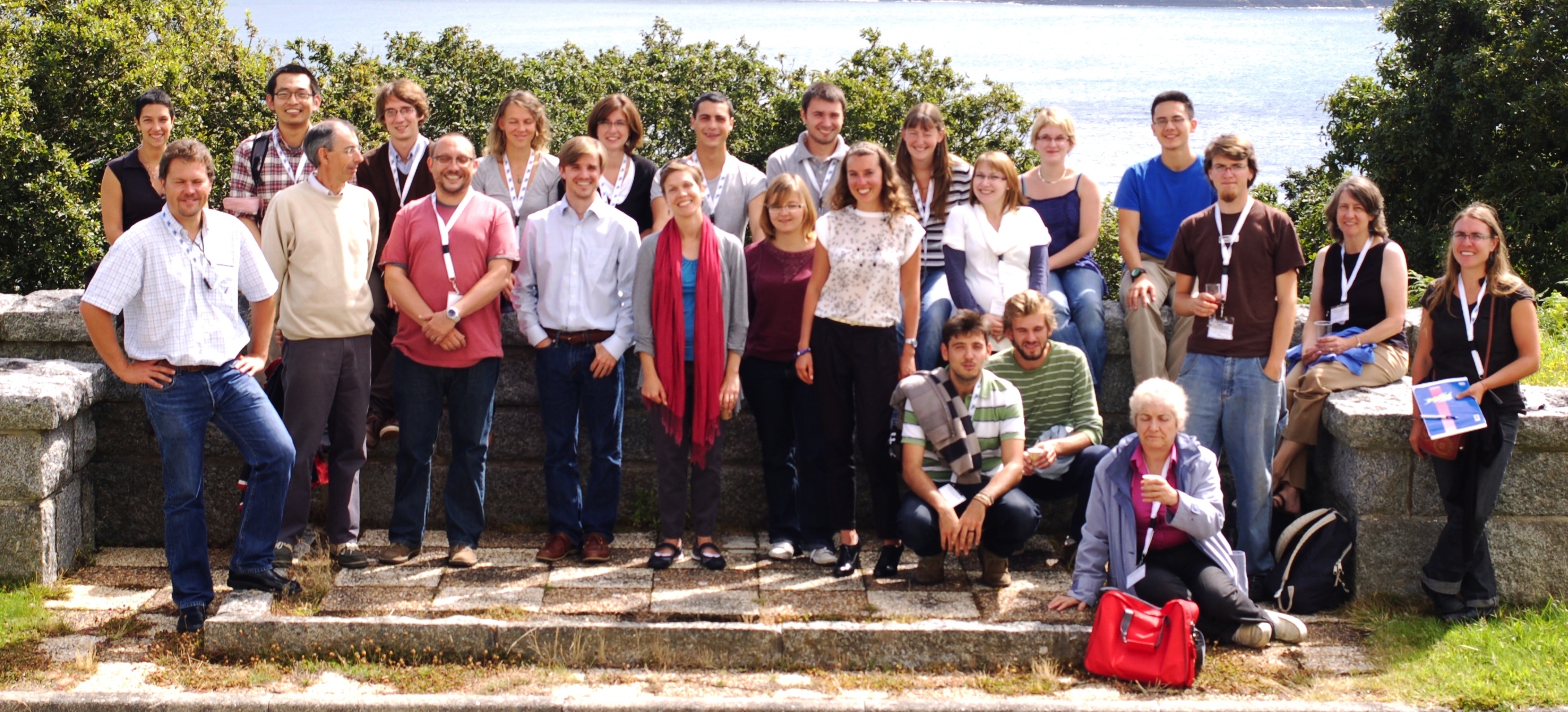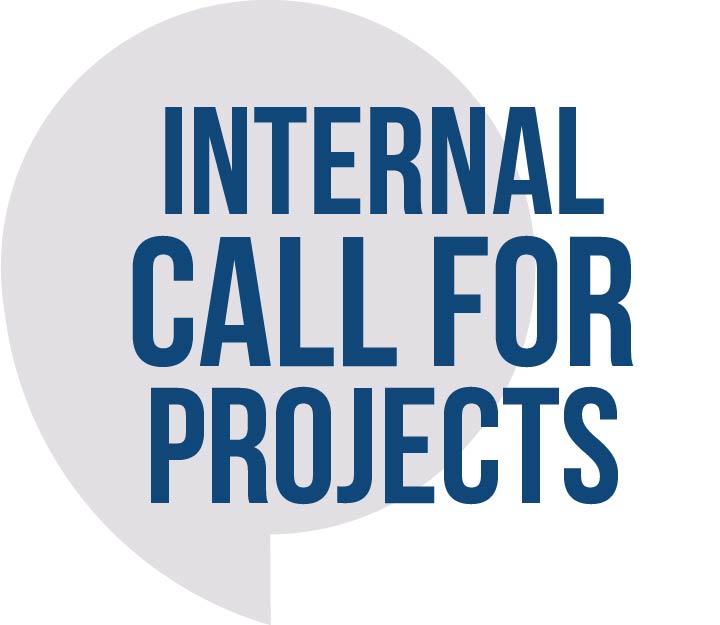GEOCEAN report
Report |
Downloads
|
In August 2012, an international cohort of over 100 young and established scientists assembled at the European Institute for Marine Studies (IUEM) and Ifremer in Brest. Drawing them together on the Brittany coast was a symposium in tribute to Jean Francheteau and a summer school focused on “Geodynamic processes and biochemical interactions at seafloor spreading ridges”, the first of several such meetings enabled by the recently successful Labex MER initiative, a 10 year “cluster of excellence” program that assembles top-ranked laboratories in the field of marine sciences in western France and ensures their future excellence in research and collaboration. The meeting was further made possible by additional support from the University of Brest, CNRS, Ifremer, the Region of Brittany, the General Council of Finistère, and the Urban Community of Brest. Attendees represented a wide swath of scientific interests, including the kinematic and thermo-mechanical evolution of plates, geodynamic processes at seafloor spreading centers, the geochemistry of hydrothermal fluids and fluid-rock interaction, microbial biogeochemistry and ecosystems in extreme environments. An equally wide cross-section of career stages were represented, including senior and emeritus scientists intimately involved in the initial development of plate tectonic theory, mid- and early-career researchers leading the charge today, and young graduate students eager to make their mark. Uniting this diverse group is the legacy their respective fields share in the study of seafloor spreading centers and the development of plate tectonic theory. No single individual represents this legacy better than Jean Francheteau, Professor at the University of Brest who passed away in July 2010 and to whom the symposium was dedicated.
Symposium
The Symposium was organized in two day-long sessions on plate tectonics and processes at seafloor spreading centers, two fields in which Jean Francheteau made inspiring breakthroughs and discoveries. The welcome address by Jean-Yves Royer, Pascal Gente (vice-President for research at the University of Brest) and Jean-François Stephan (Head of the Earth and Space Science Institute at CNRS) was complemented by a testimonial by Sarah Francheteau-Berman, Jean’s daughter, on how his family viewed and lived his scientific activities. Xavier Le Pichon and W. Jason Morgan recalled Francheteau’s contribution to finite plate reconstructions. Robert Ballard, Richard Hey, Claude Rangin and Thierry Juteau brought lively memories of Francheteau’s involvement in the frontier exploration of the mid-oceanic ridge system, from the FAMOUS expedition on the Mid-Atlantic Ridge to the exploration of the East Pacific Rise with submersibles that lead to the discovery of hydrothermal smokers and deep-sea ecosystems. Pierre Choukroune, Claude Jaupart, Richard Gordon, Michel Diament, Emile Okal, Louis Géli and Yossi Mart presented syntheses on various topics illustrating the breadth of Francheteau’s scientific interests in the origin of plate tectonics, heat-flux on the continents, current plate motion, intraplate volcanism, oceanic earthquakes and back-arc basins. The second day was devoted to seafloor spreading processes, including the ophiolite record of the generation and evolution of oceanic crust, volcanologic, geophysical and geochemical high-resolution observations from active ridges and deep-sea drilling efforts (Thierry Juteau, Mathilde Cannat, Alessio Sanfilippo, Michael Perfit, Catherine Mével, Anne Deschamps, Lilly Muller), as well as the dynamics of fast-spreading ridges and overlapping spreading centers (Jason Phipps-Morgan, Lars Ruepke, Richard Hey). A poster session concluded the symposium and covered various topics in line with the oral sessions: geophysical modeling of Earth’s dynamics and transform faults, studies of hydrothermal sites in various environments, petro-geochemical investigations of deep-sea materials, and microbial ecology and interactions at hydrothermal sites and in deep cores. The symposium was very successful in bringing together several generations of scientists from the early days of mid-oceanic ridge exploration to the most up-to-date and state-of-the-art studies of seafloor spreading processes. In this respect, Jean Francheteau continued to play his role as a catalyst for gathering scientists from different fields. Session breaks and dinner at the Oceanopolis aquarium provided many opportunities for cross-field stimulating discussions.

Part of the attendees to the GEOCEAN Symposium
Summer School
After the two-day Symposium, nearly 40 participants remained for the three-day summer school that followed. The summer school was divided into three themed sessions, one per day, where invited experts presented each theme through a combination of classroom lectures and interactive training sessions. One the first day and following a welcome and introduction by organizers Olivier Rouxel and Jean-Yves Royer, Debbie Milton provided an introduction and overview of Interridge. Michael Perfit, Benoit Ildefonse, and Wolfgang Bach then followed with lectures covering geodynamics and petro-geochemical processes at seafloor spreading ridges and flanks, complemented by hands-on exercises in geodynamic modeling (Anne Deschamps), core logging techniques (Louise Anderson), and petrological description (Wolfgang Bach, Benoit Ildefonse, and Gilles Chazot). The second day, focusing on fluid-rock interactions and geochemistry of seafloor hydrothermal systems, featured presentations by Yves Fouquet, Margaret Tivey, Brian Glazer, and Brandy Toner. Brian Glazer and Brandy Toner led training sessions on in-situ electrochemical analysis and the treatment of x-ray spectroscopic data, respectively, while Yves Fouquet, Olivier Rouxel and Jean-Alix Barrat directed sessions on seafloor mineral deposits and isotope geochemistry. The morning of the third and last day explored geobiological interactions in extreme environments through lectures by Stefan Lalonde, Olivier Rouxel, Anne Godfroy, and Pierre-Marie Sarradin. The afternoon of the last day included a presentation on European funding opportunities for students and postdocs by Lucie Roa, but was largely set aside for what proved to be a lively roundtable discussion of the big picture scientific questions in each theme, along with the future research directions and methodological advances required to inform them.

Part of the attendees to the GEOCEAN Summer School
Discussion Groups
Opinions and interests were as broad as the group of researchers represented, yet several key themes and ideas emerged as separate focus groups shared the results of their individual discussions in front of the entire summer school. The geodynamic and petro-gechemical discussion group highlighted current shortcomings in the integration of studies spanning disparate spatial and temporal scales. It was suggested that future investigations should better emphasize the consideration of both mineralogical data probing cm- to mm-scales and remote sensing data that can provide meter- to kilometer-scale geological context. The fluid-rock interaction and seafloor hydrothermal geochemistry discussion group pointed out a distinct lack of quantitative constraints on seafloor hydrogeology; further investigation of substrate permeability, reaction rates, and fluid flows were identified as essential. Finally, the geobiology in extreme environments discussion group emphasized three main points: (1) that our current understanding of the deep biosphere is not anymore limited by available methodology, but rather a limited survey of potentially-important habitats; (2) symbiosis is hugely important at all scales in chemosynthetic ecosystems, however its investigation is hampered by current sampling technology, particularly with regards to maintaining in-situ temperatures and pressures during sampling, and (3) that linking organisms and their environment at the seafloor is essential and benefits greatly from in-situ measurement and a follow-the-energy approach.
Whether relating to the oceanic lithosphere, hydrothermal fluids, or microbial ecology, several key themes proved universal among the diverse discussion group themes. First, the importance of in-situ measurement and observation was emphasized across disciplines. Framing observations and analyses in their geological, geochemical, or biological in-situ context is a costly yet essential aspect of seafloor research that each of the focus groups emphasized independently. Second, related to context was the idea and importance of heterogeneity, and the difficulties inherent in defining it across disciplines. Third, also emphasized was the need for comprehensive and well-defined avenues of data sharing; the cost and effort involved in research at the seafloor warrants an open and lively exchange of data and samples. Lastly, it was recognized across disciplines that field work and the analysis of natural samples benefit significantly from complimentary experiment or modeling efforts on land, and that tight coordination between such efforts represents an important but perhaps underutilized avenue for facilitating discovery.
Acknowledgements
It is clear from the exit survey that the 2012 GEOCEAN symposium and summer school was a great success in the eyes of the participants. The organizers wish to thank the Labex MER program and external sponsors for their generous support, and Corinne Floc'h-Laizet, Dominique Gac, and Aurélie François in particular for their personal assistance. Finally, a warm thank you is extended to all the participants, who made for a symposium and summer school that we are certain would have made Jean Francheteau proud.
Document Actions











